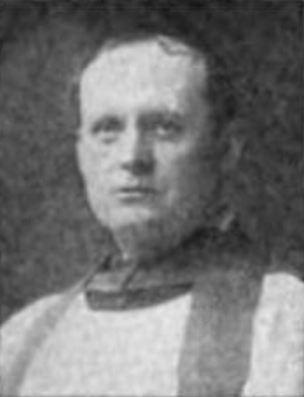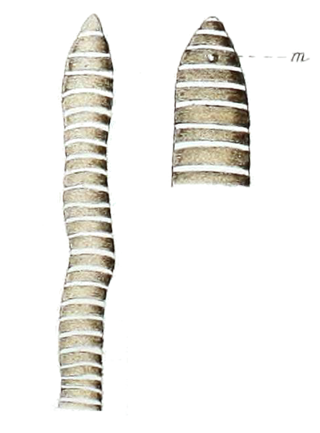
The red knot or just knot is a medium-sized shorebird which breeds in tundra and the Arctic Cordillera in the far north of Canada, Europe, and Russia. It is a large member of the Calidris sandpipers, second only to the great knot. Six subspecies are recognised.

Formica is a genus of ants of the family Formicidae, including species commonly known as wood ants, mound ants, thatching ants, and field ants. Formica is the type genus of the Formicidae, and of the subfamily Formicinae. The type species of genus Formica is the European red wood ant Formica rufa. Ants of this genus tend to be between 4 and 8 mm long. Ants belonging to the Formica genus possess a single knob or bump located between their thorax and abdomen. These ants primarily feed on honeydew, a sugary liquid produced by aphids. Interestingly, Formica ants appear to take on a shepherding role with smaller aphids, relocating them to different parts of plants to ensure a continuous food source for the aphids. By doing so, the ants can establish a relatively sustainable honeydew supply for both themselves and their colony.

The Punnett square is a square diagram that is used to predict the genotypes of a particular cross or breeding experiment. It is named after Reginald C. Punnett, who devised the approach in 1905. The diagram is used by biologists to determine the probability of an offspring having a particular genotype. The Punnett square is a tabular summary of possible combinations of maternal alleles with paternal alleles. These tables can be used to examine the genotypical outcome probabilities of the offspring of a single trait (allele), or when crossing multiple traits from the parents. The Punnett square is a visual representation of Mendelian inheritance. For multiple traits, using the "forked-line method" is typically much easier than the Punnett square. Phenotypes may be predicted with at least better-than-chance accuracy using a Punnett square, but the phenotype that may appear in the presence of a given genotype can in some instances be influenced by many other factors, as when polygenic inheritance and/or epigenetics are at work.

William Bateson was an English biologist who was the first person to use the term genetics to describe the study of heredity, and the chief populariser of the ideas of Gregor Mendel following their rediscovery in 1900 by Hugo de Vries and Carl Correns. His 1894 book Materials for the Study of Variation was one of the earliest formulations of the new approach to genetics.

Reginald Crundall Punnett FRS was a British geneticist who co-founded, with William Bateson, the Journal of Genetics in 1910. Punnett is probably best remembered today as the creator of the Punnett square, a tool still used by biologists to predict the probability of possible genotypes of offspring. His Mendelism (1905) is sometimes said to have been the first textbook on genetics; it was probably the first popular science book to introduce genetics to the public.

The mountain beaver is a North American rodent. It is the only living member of its genus, Aplodontia, and family, Aplodontiidae. It should not be confused with true North American and Eurasian beavers, to which it is not closely related; the mountain beaver is instead more closely related to squirrels, although its less-efficient renal system was thought to indicate greater relative antiquity for the species. There are seven subspecies of mountain beavers, six of which are found in California and three of which are endemic to the state.

Lineus is a genus of nemertine worms, including the bootlace worm, arguably the longest animal alive. Lineus contains the following species:

The Bornean crested fireback is a medium-sized forest pheasant from Borneo and the Bangka Belitung Islands. It is the type species of the genus Lophura. Prior to 2023, it was referred to as simply the crested fireback as the Malayan crested fireback was lumped with this species, though both have since been split.

Rufa Mae Ocampo Quinto-Magallanes is a Filipino actress, comedian, television presenter, producer and model. Known for her camp and signature comedic performances in film and television, she has been cited as a notable figure in Philippine pop culture. Dubbed as the "Comedy Princess", she is a ten-time Best Comedy Actress winner at the Star Awards for Television, the most for any actress. Her other accolades include a Golden Screen Award, a ComGuild Academe’s Choice Award and "Best Supporting Actress" at the PMPC Star Awards for Movies, including a nomination from the FAMAS Award for Best Actress. The Philippine Star named her one of the greatest comedians of all time in 2006.

The rufous sabrewing is a species of hummingbird in the "emeralds", tribe Trochilini of subfamily Trochilinae. It is found in El Salvador, Guatemala, and Mexico.

The rufous owl, also known as the rufous boobook, is a species of owl in the family Strigidae. It was described in 1846 by John Gould, an English ornithologist. Its common name reflects the rufous-coloured feathers that these owls are covered with in adulthood. While it is uncommon, the species has a wide range, including Australia, Indonesia, and Papua New Guinea.

The rusty-backed antwren is a species of bird in the family Thamnophilidae, the "typical antbirds". It is found in Bolivia, Brazil, Paraguay, Peru, and Suriname.

John Punnett Peters was an American Episcopal clergyman and Orientalist.

Pupinella is a genus of land snails in the superfamily Cyclophoroidea.

Vespula rufa, commonly known as the red wasp, is a social wasp species belonging to the genus Vespula. It is found in northern and central Europe, parts of Asia, and northern parts of North America. Vespula rufa is characterised by red-brown markings and body segmentation, with the appearance varying amongst the different roles of individuals in the species. These wasps build small nests in dry banks underground that are not far below the surface. The colony cycle begins in the fall. Vespula rufa feed on live insects. One interesting fact about Vespula rufa is that the queen policing occurs in the species, and that worker policing occurs at much lower rates than other species in the genus Vespula. There are predators and parasites of the species. The species goes through a series of events before leaving the nest.
Drepanophorella is a genus of nemerteans belonging to the monotypic family Drepanophorellidae.
Uniporus is a genus of worms belonging to the monotypic family Uniporidae.

Baseodiscus is a genus of nemerteans belonging to the family Valenciniidae.

Cerebratulus is a genus of nemerteans belonging to the family Lineidae.
Zygeupolia is a genus of nemerteans belonging to the family Lineidae.
















